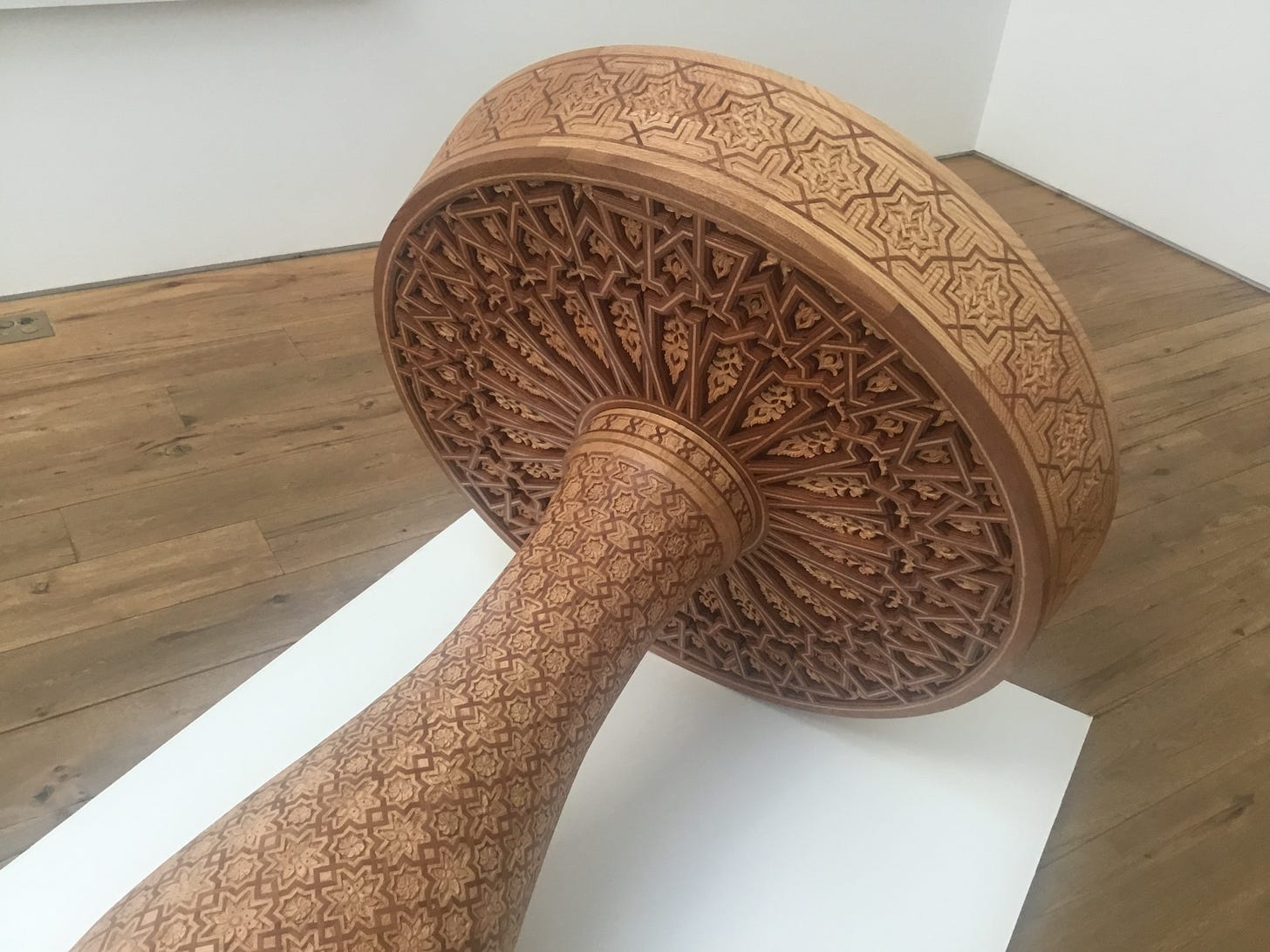Abdulnasser Gharem: Hospitable Thoughts
Clarity in political art is difficult to pull off, if the artwork aims to be more than a poster or bumper sticker. Abdulnasser Gharem attains a forthrightness and immediacy with his works on display at Marc Straus gallery, all the more striking as it contrasts with what we’ve come to expect from contemporary art which has been given the gloss of politics. Gharem’s work does not rely on homilies in an artist statement, and it eschews the feints which suppose hermeneutic difficulty as a signifier for artistic labor. Seeing this show, I was put in mind of Doris Salcedo’s work, which has a similar directness of address, both poetic and political.
The show serves as a mini-retrospective, as it covers different bodies of work over 15 years. The first set as you enter the gallery includes paintings and a sculpture whose surfaces are entirely covered by the tiny raised characters of embossing stamps, some Latin characters, and some Arabic. The surface relief is lightly painted, and each emboss character tends to be painted one color, so from afar the image has a pixelated quality. When viewed up close, some highlighted characters will resolve into poignant phrases, such as, “citizenship by forceps”, and “this barrier is capable of amassing people who accept a marginal existence”. I couldn’t help but shudder as I read some of these. These phrases reveal the sharpened thoughts of a life lived under political and social repression. In such a state, thoughts may be the only refuge of expression. The use of closely set embossing stamps bring to mind a bureaucratic logorrhea, a banality which emphasizes the everydayness of the terror expressed in the works. The color palette of the images is muted and matte, and no spot lights shone on the works, as the gallery was only lit by natural light from the front window. The painting images had an archaeological or clinical quality, at times like unearthed mosaics, at other times like primitive computer imagery.
Another set of works were performances from 2007 - 2015. These were documented as videos and photographs. The presentation of each is direct, and each induced a queasiness. The backstory for The Path (Siraat) is the collapse of an ill-constructed concrete bridge, which caused the deaths of those who had sought shelter under it during a storm. This bridge collapse is a possible symbol of state failure in a kleptocratic regime. Gharem spray-paints ‘Siraat’ over and over on the concrete surface, all the way to the edge of the precipice at the point of collapse. The short video ends with a night view of a herd of goats or sheep approaching the point of collapse, their eyes creating spectral reflections when they all turn to the camera.
A last set of work show an oversized seal whose wooden handle is intricately carved in Islamic geometric patterns. The embossed stamp base is exposed, and a phrase reads (in the part that is written in English) “in accordance with Sharia law”. On the wall is the ink impress on paper of what must have been a similar stamp, with the same English text. These works created questions for me, in a good way.
I reflected on the circumstances of biography, and their impact on the productions of an artist. I read that Gharem was (or maybe still is) in the Saudi Arabian army, serving as a lieutenant colonel. His work displays a combined urgency and consideration which distinguishes it from the array of contemporary art called ‘political’. The urgency in his work would seem drawn from his biographical exigencies — living in a religious fundamentalism, under autocrats whose whims include sawing the bones of dissenting journalists. Immediacy of needs sharpen the politics, including within the realm of art. (Insert here the usual caveat against a too-deterministic reading of causes and effects when interpreting an artist’s work.) Gharem’s art would seem to say we are stamped and written on, by implacable and institutional forces; nevertheless we are driven to bring our voices to bear, to express the wish of every human to escape tyranny, by as clear a means as we are able.









